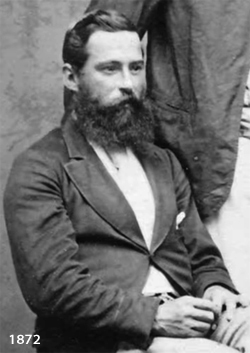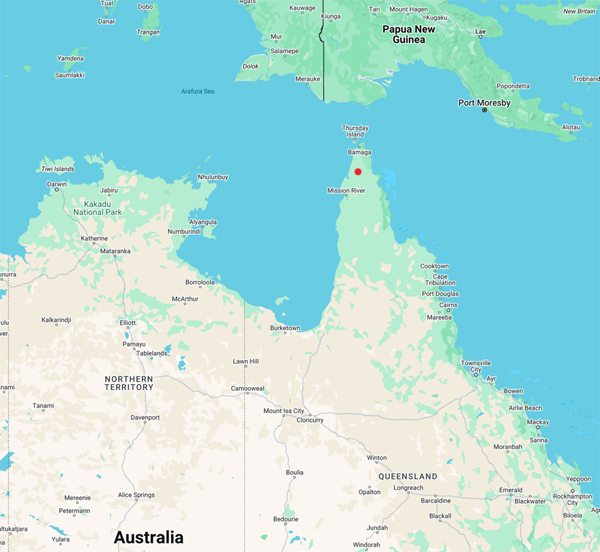
Council of Heads of Australasian Herbaria
Australian National Herbarium
Biographical Notes
 |
Council of Heads of Australasian Herbaria |
 Hann, William (1837 - 1889)
Hann, William (1837 - 1889)In 1872 six white men led by William Hann, a pastoralist from the Kennedy district of the new British colony of Queensland, set out to determine the mineral and agricultural potential of the supposedly “empty” Cape York peninsula.
In late June 1872, the six white explorers (including Norman
Taylor, geologist. Dr. Tate, botanist, and Frederick Warner, surveyor) and an Aboriginal, Jerry, set off for an anticipated six months expedition from the most northerly point of European settlement in Queensland - Mount Surprise Station.
They took 15 packhorses, 10 spare horses, 20 sheep, five months' supply of flour, tea, sugar, rice potatoes and dried apples - and anticipated they would supplement rations by hunting and fishing. The intended exploration area included the rugged country about the Kirchner Range, north to Princess Charlotte Bay and back south along the coastal fringe to Cardwell.
Jerry, who had been working for the Hann family as a stockman since he was 14 or so, knew the pre-white contact trade and exchange routes linking the southern parts of Cape York Peninsula with Princess Charlotte Bay and areas to the coast. He could speak three of the major Indigenous languages of south-east Cape York Peninsula - Jittabal/Girramay (his own), Gudjula/Gugu Badham and Wakaman/Yalanji.
After some time, They followed the Kennedy River in a south-easterly direction until meeting Normanby River that was followed to its headwaters in Normanby Range. It was in the adjoining Cunningham Range that they discovered the first fall of the eastern waterways. There they followed Oaky Creek, a tributary of Annan River. Hann thought this was Endeavour River and followed it to what he believed to be the point where British explorer James Cook had careened his ship Endeavour in 1770. However, they were in fact at the mouth of Annan River in Walker Bay, south of Endeavour River.
Hann has been variously described by those who knew him as being petulant, tight fisted, overbearing and not easy to get along with. Geologist and explorer Robert Logan Jack (1845-1921) indicated that Hann confessed to an occasional loss of temper and injustices against his subordinates, all in the heat of the moment.
Thomas Tate was the designated naturalist for the expedition and thus had responsibility for both flora and fauna collections. (read his comments on the expedition here). A total of 81 botanical specimens have been located that were collected by Tate.
Taylor, on the other hand, already had considerable experience with collecting botanical specimens while undertaking geological surveys. Apart from Taylor's assigned geological responsibilities for the expedition, he also un-officially undertook to collect botanical specimens for Baron Ferdinand von Mueller (1825-96), government botanist of Victoria. A further 68 specimens collected by Taylor have been located, totalling 149 surviving specimens from the expedition.
The Queenslander Sat 13 Apr 1889 reported:
Source: Extracted from:
https://www.theguardian.com/australia-news/2020/nov/28/discovery-and-survival-an-1872-cape-york-expedition-revisited-and-the-girramay-man-who-saved-it
P.I. Taylor and N. Huxley 'A re-examination of William Hann's Northern Expedition of 1872 to Cape York Peninsula, Queensland', Historical Records of Australian Science, 2021, 32, 67-82
https://www.publish.csiro.au/hr/pdf/HR20014
The Queenslander (Brisbane)
Sat 13 Apr 1889
Page 686
The Wingham Chronicle and Manning River Observer (NSW),
Wed 14 Jun 1916, p.4, WILLIAM HANN
Portrait Photo: Ref 1 above, and Queensland State Library, Photo.No. 54814.
Data from 2 specimens
